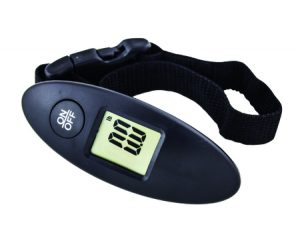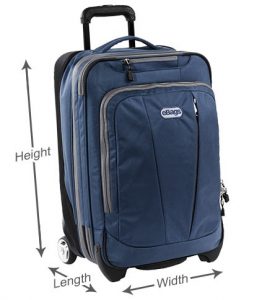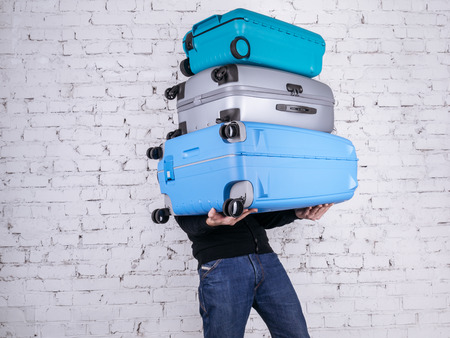There have been so many changes to baggage rules in recent years, especially regarding the carry-on bag. These rules are determined by airline, size, weight and airfares. In addition, there isn’t one standard policy that is used for all airlines. While there are some guidelines and generalities, each airline has its own baggage policy. That means it’s time to know more and be prepared.
 First, don’t be “that person” standing at the check-in counter with your bag open reshuffling its contents.
First, don’t be “that person” standing at the check-in counter with your bag open reshuffling its contents.
Invest in a luggage scale, one that packs easily. Generally speaking, a checked bag’s weight allowance is 50 pounds, but can vary by airline, class of service and fare purchased. Increasingly, airlines now have weight restrictions on carry-on bags as well, some as little as 18 pounds You’ll not only be able to weigh your baggage at home before you leave, you can also weigh it at the destination after you’ve made purchases.
 Second, measure your carry-on and checked bags. In 2015, Consumer Reports said it was made aware of inconsistencies in manufacture sizes. Consumer Reports purchased 11 bags from various brands that were advertised as “carry-on” luggage and then measured them using a laser level. They discovered that majority the 11 bags were larger than the manufacturer claimed. Therefore, you’ll want to measure the height including the wheels and handle, the width and the length. Then visit the airline’s website that you are traveling on to verify their carry-on and checked back dimensions and policies.
Second, measure your carry-on and checked bags. In 2015, Consumer Reports said it was made aware of inconsistencies in manufacture sizes. Consumer Reports purchased 11 bags from various brands that were advertised as “carry-on” luggage and then measured them using a laser level. They discovered that majority the 11 bags were larger than the manufacturer claimed. Therefore, you’ll want to measure the height including the wheels and handle, the width and the length. Then visit the airline’s website that you are traveling on to verify their carry-on and checked back dimensions and policies.
Now, you’re armed and prepared before you get to the airport so you won’t be blindsided by unwanted baggage fees.

